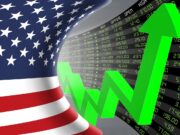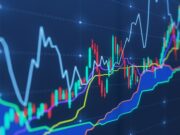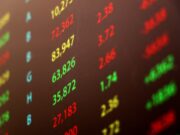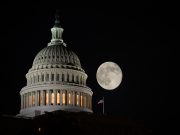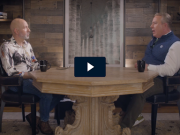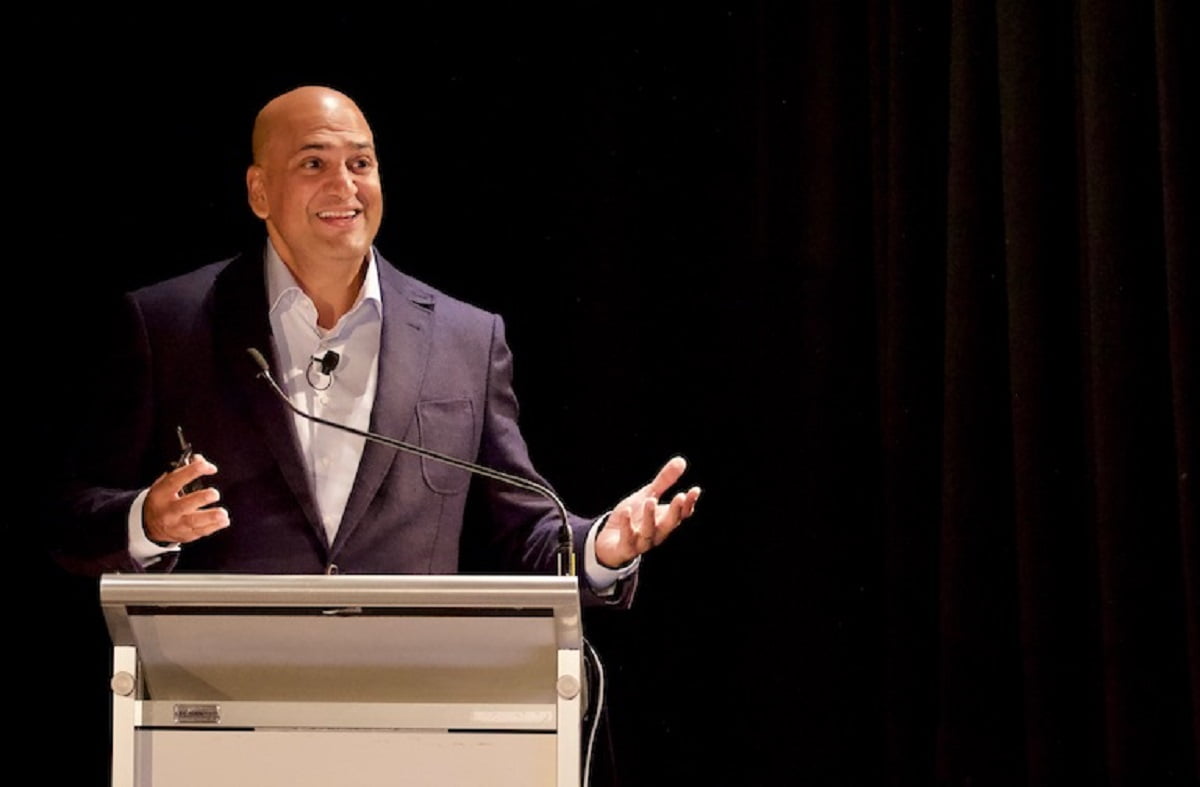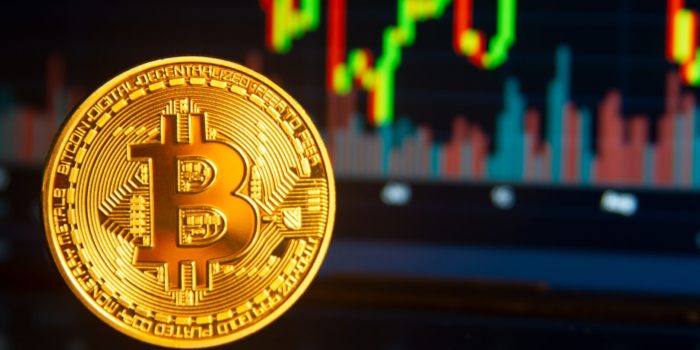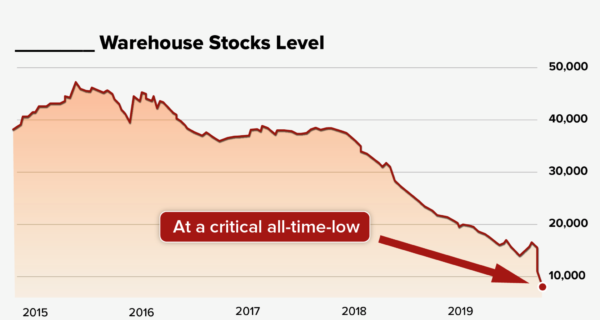Futures slipped this morning as bond yields dropped. Dow futures were down nearly 200 points ahead of the open.
The second day of bank earnings this week has come in with mixed results from Bank of America (BOA), Citigroup (C), and Wells Fargo (WFC). As reports were mixed, what could it mean for investors? Delta Airlines (DAL) also released its earnings yesterday and showed promise.
The PPI (Producer Price Index) report was released yesterday as well and put more focus on looming inflation. What are analysts’ saying this could mean for us?
We’ll have more details about these eventful stories from Wall Street and the Federal Reserve and what it all means in the full article.
In June, the PPI report shows that wholesale prices increased 7.3% from a record increase a year prior…
In other signs that inflation moved quicker than predicted from the markets, wholesale prices for June increased more than expected. The PPI (Producer Price Index), which measures what companies receive for the products they produce, grew 1% year-on-year compared to May and jumped 7.3%. This marked the second month in a row in which the PPI recorded a sequence of data from 2010 forward. The economists questioned by Dow Jones expected a monthly gain of 0.6 percent. The core PPI has risen by 0.5%, according to estimates, with the elimination of volatile food, energy, and commercial costs. In a survey of analysts, median expectations indicated that the total PPI would rise by 0.6% a month and that the central number would grow by 0.5%. Back until 2010, the yearly gains were the biggest.
A day after a 5% year-over-year spike in the CPI (Consumer Pricing Index) was announced by the labor division, and the PPI headline increase is the most significant advance since 2008. The price index for the manufacturer varies from the CPI since it reflects final demand prices for businesses. The CPI records the payment of customers in the register. As with the consumer measure, the PPI has been rewarded mainly by higher prices in the car and truck industries.
Specifically, a 10.5% spike in automobiles and car parts retail was responsible for 20% of June’s jump in producer prices. Meanwhile, 70% of the growth comes from commercial services. Energy has also played an important role, with costs for final demand rising by 2.1% in June. The price of food has increased by 0.8%. Officials of the Federal Reserve have been closely monitoring inflation but say that the present rate increase is primarily due to variables that occur in the run-up to a pre-pandemic normal.
Although Federal Reserve officials have stated that price pressures are expected to be temporary, some investors are concerned that recent increases may lead to more sustained inflation. In prepared remarks to lawmakers on Wednesday, Fed Chair Jerome Powell said, “Strong demand in sectors where production bottlenecks or other supply constraints have limited production has led to especially rapid price increases for some goods and services, which should partially reverse as the effects of the bottlenecks unwind.”
As the economy struggles to improve, big banks are crossing their fingers for loan growth after more quarterly reports yesterday...
As predicted, Fed Chairman Jerome Powell opened his two-day congressional hearing on Capitol Hill by acknowledging recent inflation pressures but reiterating the central bank’s commitment to continue its extraordinarily accommodating monetary policy. The Federal Reserve released its Beige Book report this afternoon, indicating that the U.S. economic recovery has accelerated, even though price pressures have spread across the economy and become more pronounced in the hotel industry. Bank of America (BOA), Wells Fargo & Company (WFC), and Citi Group (C). Delta Airlines (DAL) reported as well, which we’ll cover in a moment.
Bank of America (BOA)’s adjusted EPS (Q2, earnings-per-share) was reported as $1.03 north of the $0.77 FactSet expectation, which decreased 4.0% annually by $21.5 billion, only shy of the Street’s $21.8 billion projection. Regarding the EPS results, BAC said that the credit loss profit provision of $1.6 billion and a positive fiscal adjustment of $2.0 billion relating to the revaluation of UK late tax assets were included. BAC claimed that the consumption has substantially exceeded pre-pandemic levels, the growth of deposits, and the loans’ level has started to increase. However, net interest revenues were 6.0% lower and/or lower, mainly driven by lower interest rates. Actions have been more insufficient.
Wells Fargo’s (WFC)’s adjusted Q2 EPS was recorded at $1.38, and its revenues rose by 10.8 percent y/y to $20.3 billion, far over the $17.8 billion Street expectation. The business has claimed its income has been supported by a drop of $1.6 billion in credit loss allowances. The windfall of low-interest rates and sluggish demand for loans has lasted; however, WFC has not lost its profits from a continuous financial reach. These robust markets have helped drive earnings within its linked risk capital enterprises, their efforts towards increasing efficiency. Shares have been higher.
Citi Group (C) showed that their adjusted earnings from Q2 reported more than the expected $1.97 of $2,85 per share, while sales decreased by 12.0% to $17.5 billion, above the predicted $17.2 billion. C stated that it had seen tax benefits for non-U.S. operating items. The enterprise added, “The pace of the global recovery is exceeding earlier expectations, and with it, consumer and corporate confidence is rising. We saw this across our businesses, as reflected in our performance in Investment Banking and Equities, as well as markedly increased spending on our credit cards. While we have to be mindful of the unevenness in the recovery globally, we are optimistic about the momentum ahead.” Citi Group gained a quick breakthrough.
The results are a bit of a mixed bag across the board. But in general terms, these institutions still stand pretty well, mainly because of the shock we saw. They are very hopeful since the economy continues to bounce up as the economy continues to reopen.
Delta makes its first profit since 2019 owing to government assistance, and revenue is increasing as travelers return...
After more than a year of pandemic lockdowns, Delta Air Lines announced second-quarter revenue that rose above Wall Street’s expectations and claimed leisure and corporate travel reservations increased dramatically. Thanks to government coronavirus help that offset part of its expenditures, the Atlanta-based airline made a profit of $652 million, ending a five-quarter losing run. Without government assistance, it expects to be profitable in the second part of the year.
While poor foreign air travel is still hampered, sales will nevertheless increase compared with the last months, says Delta. Delta said revenues would fall from $12.56 billion for the third quarter, 30 to 35%, compared with 2019. Since last year such massive demand changes were generated by the virus Delta and several other airlines sometimes compare their performance to 2019 before the epidemic.
The airline claimed that domestic leisure traffic was fully restored, and the demand for corporate travel rebounded. Average net cash sales per day (the number of tickets bought with minus reimages) reduced by 20% throughout the first quarter of this year. For Delta, the loss of $12.4 billion reported in the past year is a dramatic turnaround. They’re determined, however, to stay the course alongside the rest of the economic recovery and start genuinely earning revenue again.
For airlines (and customers) the steep increase in demand has become a stumbling block. Last year, thousands of staff took leaves of absence or took early retirement packages at the request of management, leaving certain carriers short of certified pilots, customer support agents, and other employees as demand increased. The federal assistance made it illegal for airlines to fire employees outright. Delta said last month that it would employ over 1,000 reservation agents and about 1,000 pilots over the coming year. Delta is the first airline in the United States to release its second-quarter earnings. Next week, American Airlines, United Airlines, and Southwest Airlines are expected to report.
Where to invest $1,000 right now...
Before you consider buying Delta, you'll want to see this.
Investing legend, Keith Kohl just revealed his #1 stock for 2022...
And it's not Delta.
Jeff Bezos, Peter Thiel, and the Rockefellers are betting a colossal nine figures on this tiny company that trades publicly for $5.
Keith say’s he thinks investors will be able to turn a small $50 stake into $150,000.
Find that to be extraordinary?
Click here to watch his presentation, and decide for yourself...
But you have to act now, because a catalyst coming in a few weeks is set to take this company mainstream... And by then, it could be too late.
Click here to find out the name and ticker of Keith's #1 pick...

